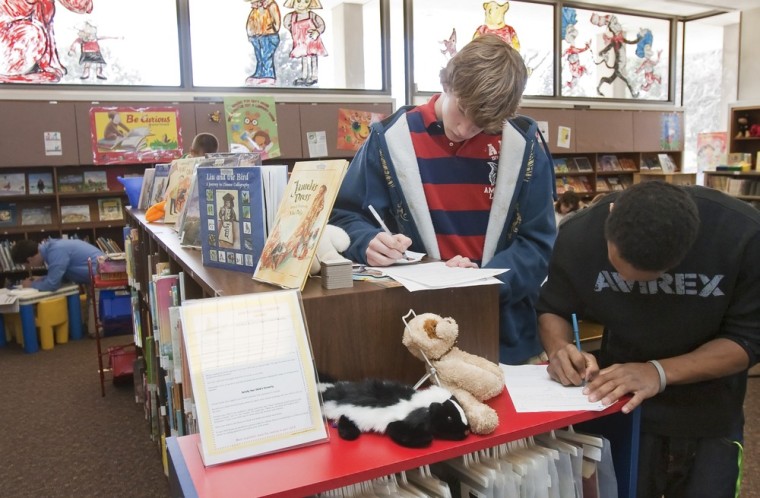It’s been a long, frustrating summer for employment-starved teens. And most unemployed adolescents will struggle to find work at least until the holiday season, the latest data suggests.
The employment picture has been bleak across the board, but it’s been particularly tough on teens. The U.S. unemployment rate was 9.5 percent last month, but for teens it hit 26.1 percent — and July is typically the peak of the summer employment season for teens. It marked the worst summer hiring season for teens since 1949, according to an analysis by Challenger, Gray & Christmas, an outplacement firm.
Part of the problem: Teens are facing unusually heavy competition from millions of older workers, many of whom have been unemployed for months or longer.
“The teens are facing heavy competition, from people in their early 20s particularly, who are taking some of those better teen jobs that usually they leave alone,” said John Challenger, CEO of Challenger, Gray.
Are you a teen searching for a job? Tell your story here.
It’s not just American teens who are struggling. By the end of the year there will be 81.2 million jobless working-age adolescents, the most since at least the end of World War II, the International Labour Organization said Wednesday.
And it does not look like the odds will be improving any time soon for teens. U.S. job openings fell for the second straight month in June and and are expected to continue dropping, according to the government's Job Openings and Labor Turnover survey released Wednesday. Competition may lighten as some young workers return to school, but teens still face a barrage of competition from older workers.
Unless the job market significantly rebounds or government intervention occurs, teens may face tough competition into next year, said Joseph McLaughlin, senior research associate with the Center for Labor Market Studies at Northeastern University.
Teen unemployment may be even worse than the official numbers show as many teens get discouraged and may no longer be counted as unemployed.
“To be unemployed you have to be in the labor force,” he said. “What we find is that when we have low levels of teen employment, teens just tend to withdraw from the labor force. So they just stop looking. They perceive there’ll be no jobs there.”
The financial need of teenagers is greater than some people realize. Increasingly, teens are searching for work to save for college or provide support for their unemployed parents.
“You have these huge groups of kids who come from low-income families, and they could use a paycheck to help support their mom with household bills or just be able to pay for themselves to help their families,” McLaughlin said.
Dennis Amon, a 16-year-old from Indiana, wants work to help his family. His mother was recently laid off as a bank teller and his father’s pay is stretched just covering expenses. His family will sometimes eat only popcorn as they struggle to pay the bills, he said. Amon has searched for work for roughly a year without success but is still hoping for a job so he can pay for his basic necessities and save for college.
“I’m not picky at all. If someone calls me I’ll jump at it,” he said.
For teens, work can be more than just a paycheck, according to a July report from the Center for Labor Market Studies. Teens who work in high school are less likely to drop out before graduation. The cumulative work people do in their teens can also result in a positive impact on the employment, wages and earnings they have in their 20s, the report found.
In addition, teens unable to get work today are more likely to have trouble finding employment in the future. Low-income teens living in areas with fewer job opportunities have a greater likelihood of engaging in delinquent behavior. Areas with fewer jobs also tend to have higher rates of teen pregnancy as well.
“We subscribe to the notion that idle hands are the devil’s workshop, and I think that’s particularly true for a lot of economically disadvantaged teens, which is a group of teens that has some of the lowest employment rates,” McLaughlin said.
With near-term prospects grim, the next big chance for teens to land work could come in the months leading up to the holiday season, Challenger said. Businesses often use the holiday season as a recruitment period, looking for potential employees they might be able to hire permanently, Challenger said.
“It depends on the kind of job and the industry the teen is working in. ... if you perform really well, that temporary job can turn into a full-time one,” he said.
Industries including retail, hospitality, food service, education, health, and arts and entertainment offer the under-20 set the best chances, McLaughlin and Challenger said. But teens may have to wait until the holidays to land the job.
